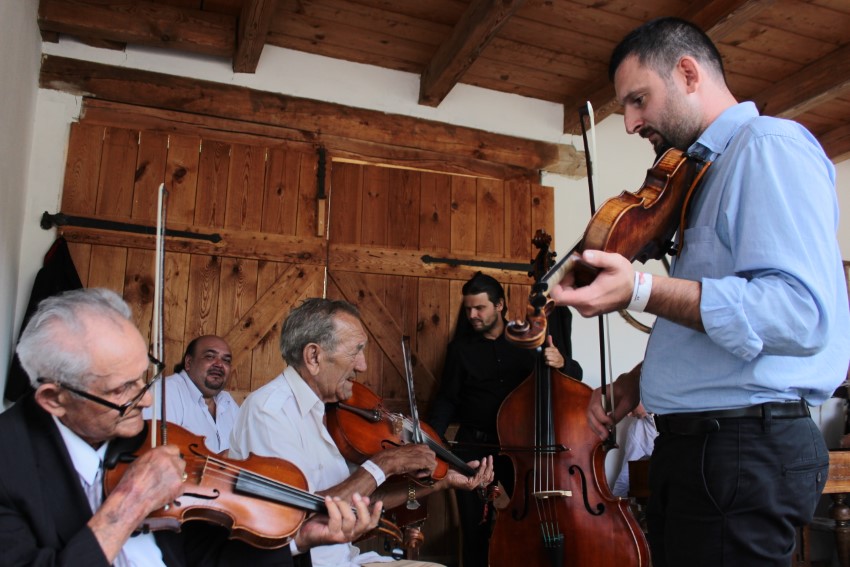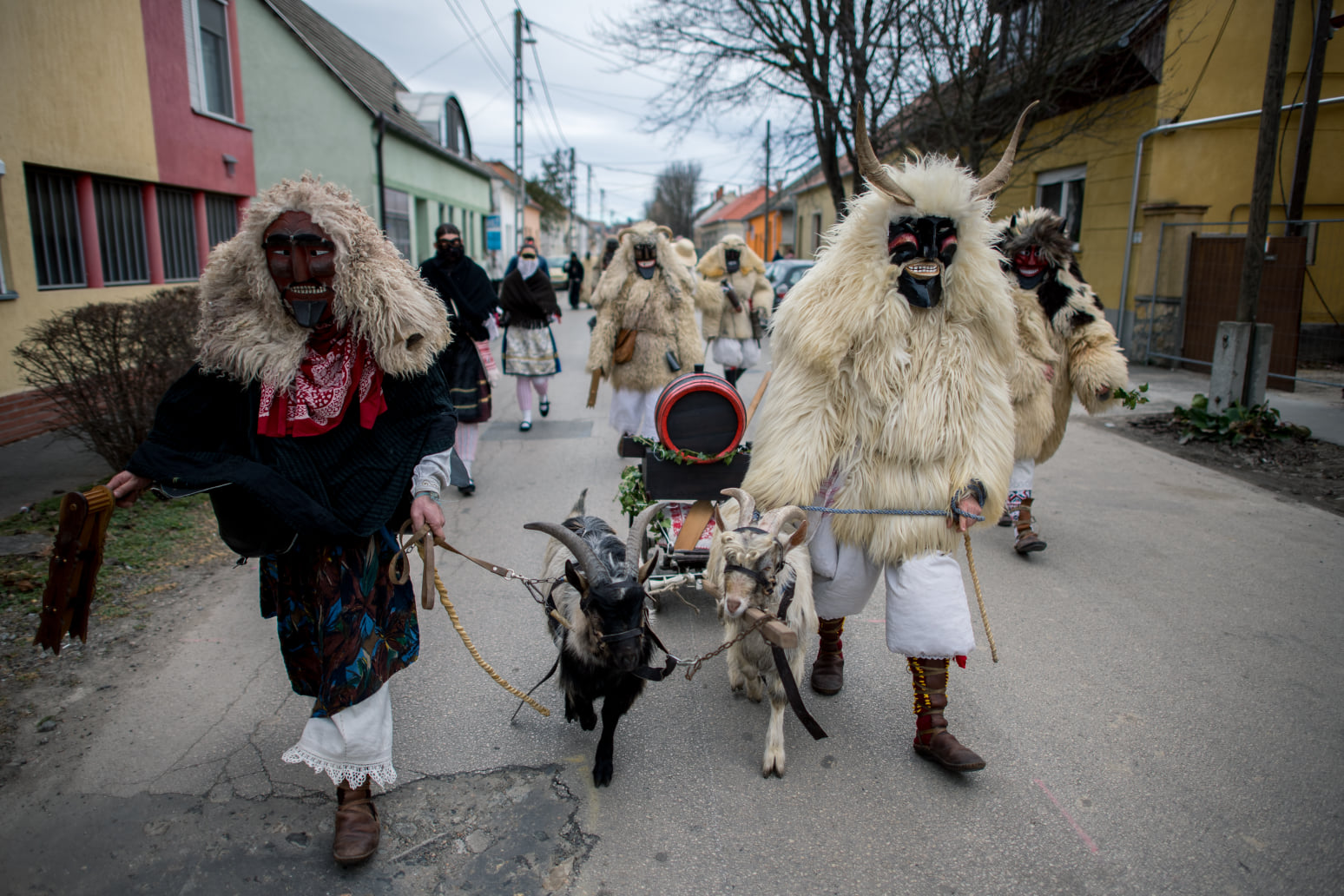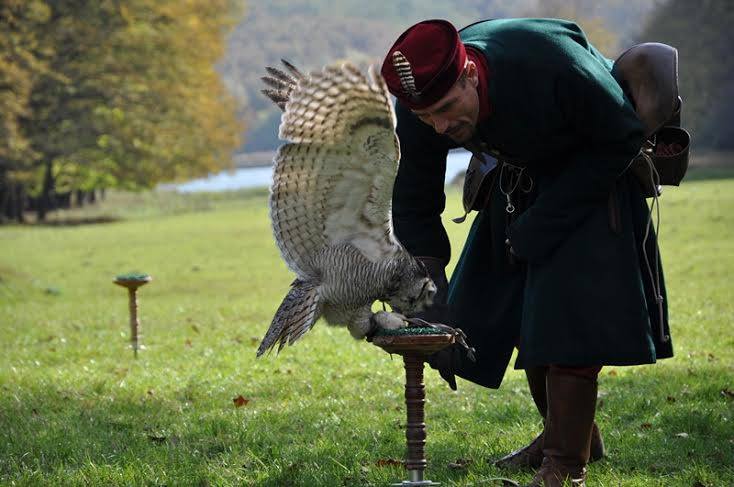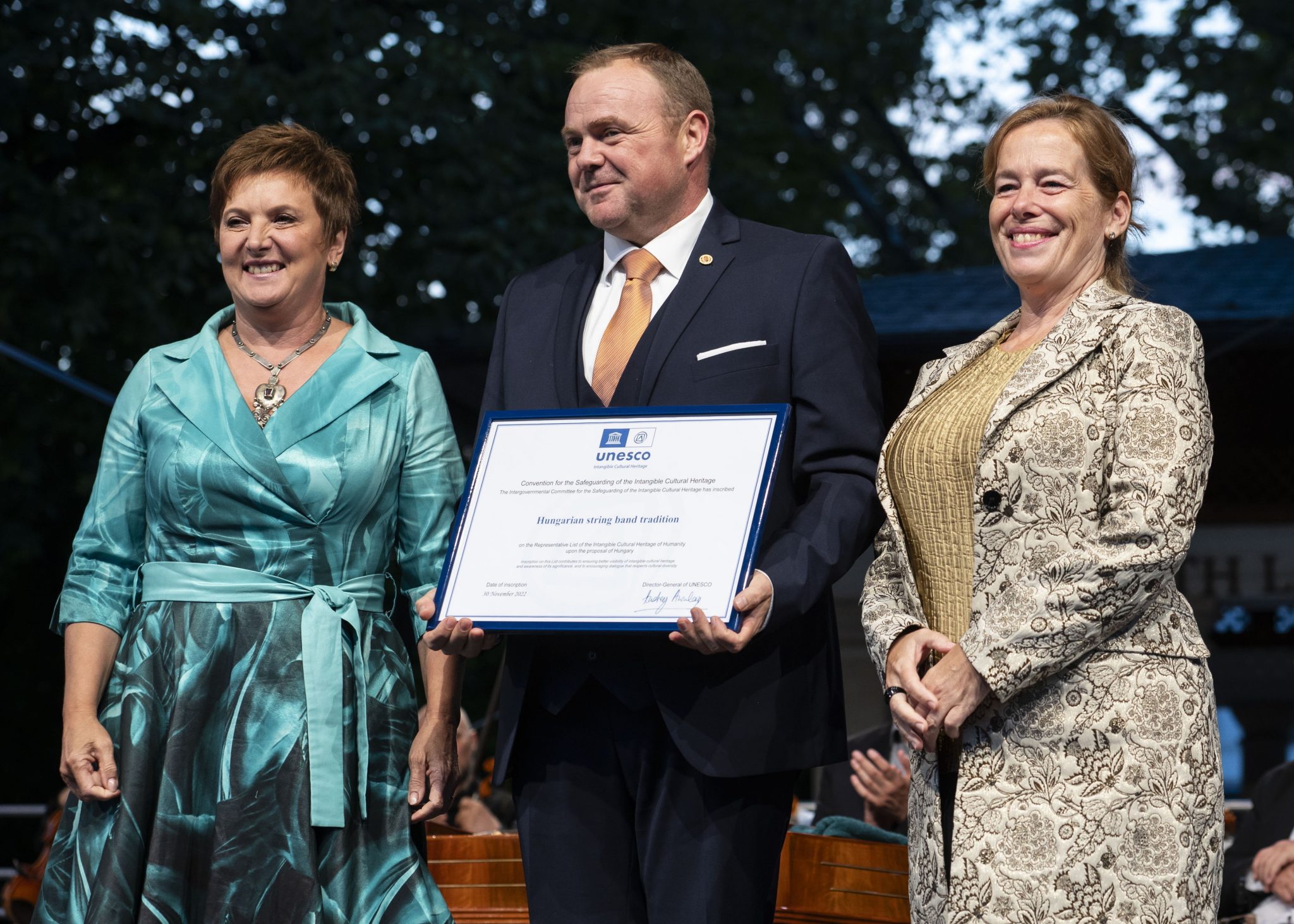
The Hungarian folk string band tradition and the breeding of Lipizzan horses have been inscribed on the UNESCO Intangible Cultural Heritage List.Continue reading
UNESCO added the Hungarian string orchestra tradition to the international list of representative elements of intangible cultural heritage last December. The honorary certificate was presented Wednesday evening at a gala concert of folk music in Balatonfüred (northern shore of Lake Balaton), Magyar Nemzet reports.
The Hungarian string orchestra tradition was submitted by Hungary as an independent nomination and was added to the international list as another Hungarian cultural heritage, after the Mohács Busó Carnival (Busójárás), Matyó embroidery, falconry (Solymászat), and blue painting.

The Busó Carnival in Mohács, another Hungarian cultural heritage. Photo: Facebook/Busójárás Mohács Busó-Carnival
Magdolna Závogyán, State Secretary for Culture at the Ministry of Culture and Innovation, noted that the aim of the register is to collect and present community knowledge passed down from generation to generation.
This is a great recognition for the country, the nation, and for those who, as performers or leaders and organizers of institutions, are solicitous about the ancient values represented by stringed instruments,”
she said.

Matyó embroidery is also considered a Hungarian cultural heritage. Photo: Facebook/Matyó hímzés
The secretary of state expressed her delight that an increasing number of children and young people are choosing to become musicians. It is therefore of utmost importance that the public education system and the network of cultural institutions pay special attention to the cultivation of this heritage, talent research, training, and the provision of performance opportunities. This is a guarantee for the continuation of tradition and the transmission of ancient knowledge, she added.

The blue painting was also included in the international register of UNESCO. Photo: Facebook/Hagyományok Háza
István Bóka (Fidesz-KDNP), mayor of Balatonfüred, recalled that since 2013, the municipality of the seaside town has been cooperating with the House of Traditions in the cultivation of folk music traditions through a competition and gala concert.

Falconry has a long tradition in Hungary and has been included in the UNESCO list. Photo: Facebook/Lovas solymászat
In December 2022, the Hungarian string orchestra tradition was included in the UNESCO Intangible World Heritage List at the 17th session of the organization in Rabat, Morocco.

Magdolna Závogyán, Secretary of State for Culture of the Ministry of Culture and Innovation, István Pál Szalonna, folk musician, and Eszter Csonka-Takács, Chairwoman of the Hungarian National UNESCO Commission for Intangible Cultural Heritage (L-R). Photo: MTI/Boglárka Bodnár
The official certificate of inscription was presented by Magdolna Závogyán and Eszter Csonka-Takács, the head of the Intangible Cultural Heritage Directorate, to István Pál Szalonna, the artistic director of the Hungarian State Folk Ensemble.
Via Ungarn Heute, Featured image via Facebook/Hagyományok Háza